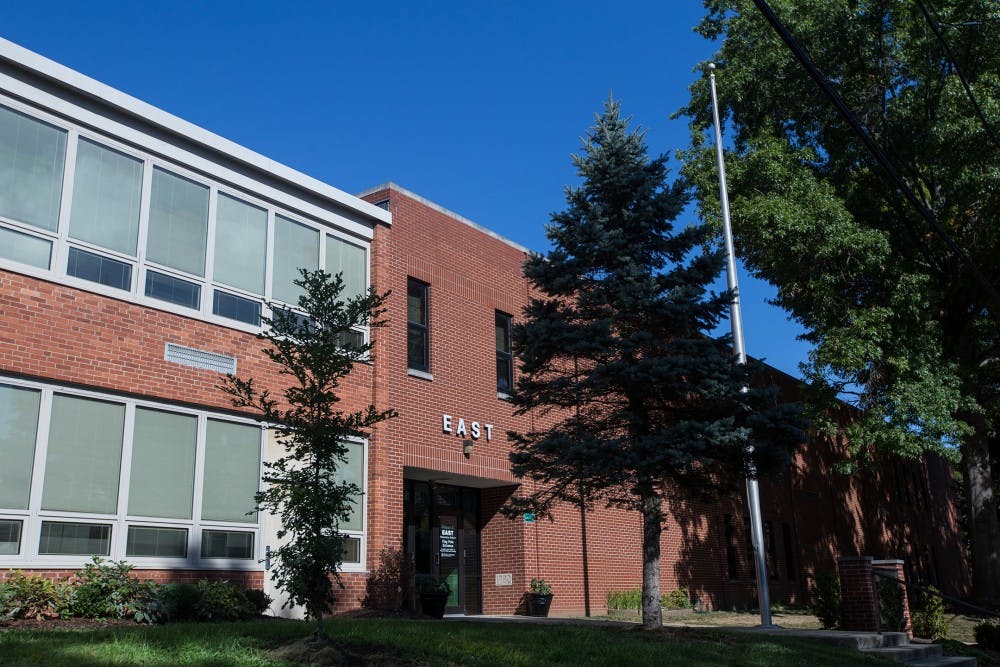After voting down the single campus solution last month, the Athens City School District Board of Education is considering “option four” after months of discussion.
“Option four” is a hybrid of all the options proposed by the steering committee board, member Kim Goldsberry said. The option would involve creating two pre-K to third grade buildings and one fourth to sixth grade building.
“I feel like, to me, this is a compromise with the people that are advocating for a single campus and the people that are advocating for neighborhood schools,” Goldsberry said.
The single campus solution would have closed all of the current elementary schools, and the elementary school would have been three separate buildings on one section of land.
The two pre-K to third grade buildings would have about 450 students total, or 100 per grade level, Athens Superintendent Thomas Gibbs said. The fourth through sixth grade building — which could also be a fourth and fifth grade building if the board decides to move the sixth grade to the middle school — would have 200 students per level, Goldsberry said.
The cost to build two pre-K to third grade buildings, one fourth through sixth grade, a new high school and a renovated middle school would be about $80 million, Gibbs said. Of that amount, the district would pay $52 million, and the state would pay $18 million.
The current proposal does not explicitly include the middle school and high school, but Gibbs said during the last conversation the board members had, they were in favor of building a new high school on the current location.
Gibbs said if the district built a new high school, it would have to keep the middle school to keep the 32 percent match with the state that was created after the significant investment into the middle school for those renovations.
The 32 percent match means that the state would cover 32 percent of the total costs to construct or renovate buildings, Gibbs said.
Goldsberry believes the new plan would allow the schools to stay in the neighborhoods while addressing socio-economic issues within the district. In a previous Post report, some board members said they wanted socio-economic integration within the district through some sort of change in the building configuration.
Kimberly Quick, a policy associate for The Century Foundation, a nonpartisan think tank, said the plan would have a positive effect on the income disparity in the schools. She believes the district should consider the location of the schools and consider the transportation routes.
“Make sure that students that might have to travel a little bit further ... that burden is not going to the students that are the most high poverty,” Quick said. “Students that are higher poverty might have more transportation issues in a lot of cases.”
Students could have larger or smaller routes depending on the location of buildings, Gibbs said, but he is "fairly certain" that redesigning those routes would not add a significant number of bus routes to the system.
Quick said socio-economic integration would benefit all students because students are exposed to people they may not have been exposed to otherwise. Academically, Quick said, socio-economically mixed schools perform better as they become middle-class, and middle-class schools are 22 times more likely to be better performing than high poverty schools.
As of this point, the board has solicited no public opinion on that option, Laura Alloway, the parent of two children at West Elementary and former school board candidate, said.
Alloway is against consolidation, and she vocalized her support for small classroom environments during her school board campaign.
“This is not the answer that's going to be providing the best educational opportunity for our children on multiple levels,” Alloway said in an email.
Matt Felton-Koestler, an associate professor of mathematics education at the Patton College of Education who is a public supporter of consolidation, has worked closely with the district and had his students placed in classrooms around the district for field experience. His understanding of the district's history led him to believe this plan would have the most realistic chance of achieving socio-economic integration.
“Considering the way that the neighborhoods in ACSD are segregated, the pre-existing stereotypes associated with the four elementary schools, and the option for intra-district transfers,” Felton-Koestler said in an email. “It is my perspective that if you want to achieve socio-economic integration in ACSD you need to bring students together sooner than seventh grade.”
If the option is approved by the board, a bond issue would appear on the ballot roughly a year from now, Gibbs said. The approval of the Option 4 would start the process of trying to get the bond issue passed, the creation of a planning process and the construction of the new facilities.
Clarification: This article has been updated to clarify Matt Felton-Koestler's name.






